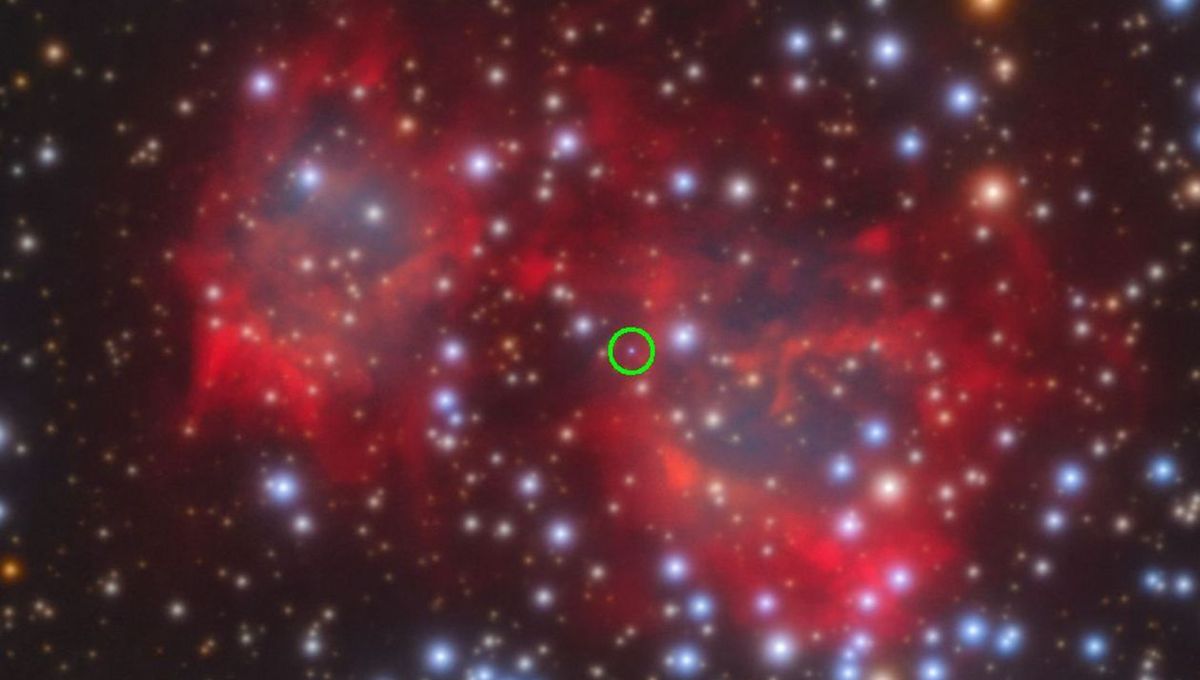
The most massive stars in the universe end their lives in supernovae, explosions that tear them apart. But for stars that aren’t quite so big, they end their lives not with a bang, but a whimper. Stars like our Sun will eventually turn into extremely hot white dwarfs, shedding most of their mass and then slowly losing heat over billions of years.
There is still so much that we do not know about this transformation and stellar evolution as a whole. For this reason, researchers are interested in finding young white dwarfs, especially when they are in clusters of stars. This allows them to better estimate the initial-final mass relation, something very important in understanding stars. Astronomers have now found a perfect candidate for this.
The white dwarf in question is at the center of a planetary nebula, the cloud of gas and dust that the star releases in the latter part of its life. It is also part of the open star cluster M37. It had a mass of about 85 percent of our Sun and a temperature 15 times higher than our star. And it is young; it became a white dwarf just a few hundred thousand years ago.
The team had a pretty good value for its final mass, but what about its initial mass? The team could estimate that from the properties of the white dwarf, the age of the cluster, and the mass of the planetary nebula that has been left behind.
When a star like the Sun runs out of hydrogen to fuse in its core, it has a little collapse, and the core contracts, getting hot enough to fuse helium. The outer layers are pushed outward and the star swells up into a red giant. These layers are loosely bound and they begin spreading. Eventually, the core will run out of helium too, collapse into a white dwarf, and push the layers out. That’s a planetary nebula, so-called because the first discovery looked round, a bit like a planet.
There are only three planetary nebulae within known star clusters, which are valuable because all the stars in them were born at the same time. Stars are born from gas clouds following the initial mass function; you get a few big stars and a lot of small ones. The big stars also go through their nuclear fuel more quickly, leaving behind the smaller ones. This allowed researchers to work out what the cluster was like and altogether, gives unique insights into the evolution of stars like the Sun.
“The data from very young white dwarfs are particularly valuable, as these are the central stars of planetary nebulae,” Professor Klaus Werner of the Institute of Astronomy and Astrophysics at the University of Tübingen, said in a statement. “None of their central stars had been studied before because they are all very distant and faint.”
This is the first time researchers have been able to study the central star of a planetary nebula in an open star cluster. Originally, the star must have weighed about 2.8 times that of our Sun, losing a huge chunk of that post-red giant phase.
“So the star has lost 70 percent of its matter during its lifetime,” Werner explained.
Another indication that the white dwarf is young is that its layers are still settling. Carbon and helium are seen on its surface. The team believes that this object will soon be a helium white dwarf, once the carbon has sunk in the interior, being heavier than helium.
The study is published in Astronomy & Astrophysics.
Source Link: Galactic Star Lab Gives Insight Into The Future Of The Sun